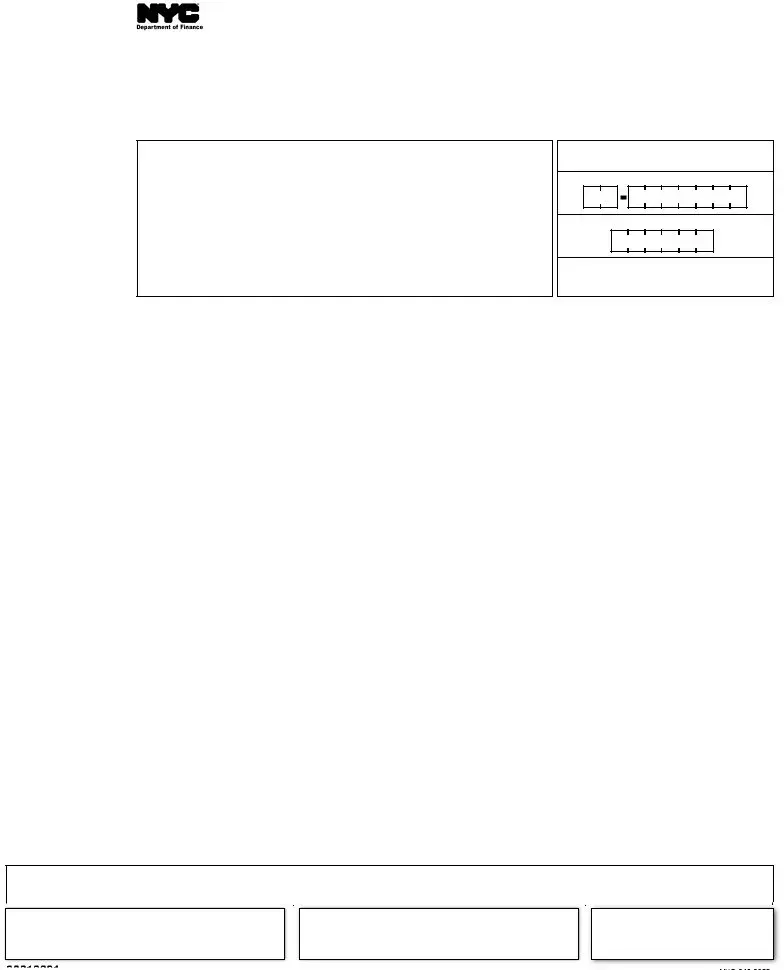The NYC 245 Activities Report form is closely related to the Federal Form 1120 (U.S. Corporation Income Tax Return) due to its role in business taxation processes. Similar to the NYC 245 form, which corporations utilize to report activities for tax purposes without actually filing a tax return in New York City, Form 1120 serves as the federal tax return for corporations in the United States. Both are mandatory filings for corporations operating within their respective jurisdictions, designed to report income, profits, and losses. However, while the NYC 245 specifically disclaims liability for certain city taxes, Form 1120 calculates federal income tax liability.
Form NYC-4S, for General Corporation Tax Return, shares a common goal with the NYC 245 form, as both involve the reporting of business activities within New York City. Corporations that are fully operational in NYC use Form NYC-4S to calculate and report the general corporation tax due to the city. In contrast, the NYC 245 is for those claiming exemption from these taxes, still requiring those corporations to report their presence and activities. Both forms help the city track corporate activities and ensure appropriate taxation.
Form NYC-2, the Business Corporation Tax Return, is another document with a similar purpose to the NYC 245 form. It is designed for corporations to report their earnings and calculate the business corporation tax owed to New York City. While the NYC 245 form is used by corporations to report activities without claiming tax liability, both forms play crucial roles in the city’s corporate taxation framework, ensuring businesses contribute their fair share to municipal finances.
The Form 990 (Return of Organization Exempt From Income Tax) parallels the NYC 245 form in its focus on tax exemption. Non-profit organizations use Form 990 to provide the IRS with financial information, proving their exemption from federal income taxes. Similarly, corporations use the NYC 245 to assert activities in NYC that, they claim, do not subject them to certain city taxes. Both forms are critical for entities to maintain their tax-exempt status, albeit in different tax jurisdictions.
Schedule C (Profit or Loss from Business), part of the personal income tax return, although different in its targeted filer, resembles the NYC 245 form in intent. Schedule C allows individuals to report profits and losses from their sole proprietorship businesses, similar to how the NYC 245 form lets corporations report their business activities in NYC. Both documents are vital for tax reporting purposes, allowing accurate assessment of tax liabilities or exemption claims.
Form W-9 (Request for Taxpayer Identification Number and Certification) is utilized in the tax reporting process, much like the NYC 245 form. The Form W-9 is often required by financial institutions and other entities to accurately report income paid to individuals or corporations, which relates to how the NYC 245 form is used by corporations to report activities that establish their tax responsibilities or exemptions in New York City.
Form NYC-EXT, used for requesting an extension of time to file a NYC tax return, operates in the same regulatory space as the NYC 245 form. Both forms interact with New York City’s Department of Finance, allowing businesses more flexibility in their reporting requirements. While the NYC-EXT grants additional time for filing detailed returns, the NYC 245 offers a way for corporations to report their presence and business activities without filing a complete tax return.
Form SS-4 (Application for Employer Identification Number) and the NYC 245 form are linked through their role in business identification and tax reporting. While Form SS-4 is used to apply for a unique identifier for federal tax purposes, the NYC 245 form requires this identifier as part of its reporting process. This connection underscores the importance of accurate identification in managing tax obligations and exemptions.
The Statement of Information (varies by state but generally referred to as Form SI in many states) mirrors the NYC 245 form in its functionality of reporting business activities and details. Required annually or biennially, depending on the state, these forms update the state on the corporation's information, similar to how the NYC 245 informs New York City of a corporation's activities and claims of tax exemption.
The Application for Tax Exemption, while not a single standardized form due to variations across different jurisdictions and tax statuses, resembles the NYC 245 in its essence. Both types of documents are pivotal for entities seeking to establish or maintain exemption from certain tax obligations, whether at the federal, state, or city level. Specifically, the NYC 245 form is used by corporations claiming an exemption from New York City’s business and general corporation taxes, a process paralleled by various exemption applications in other tax contexts.


